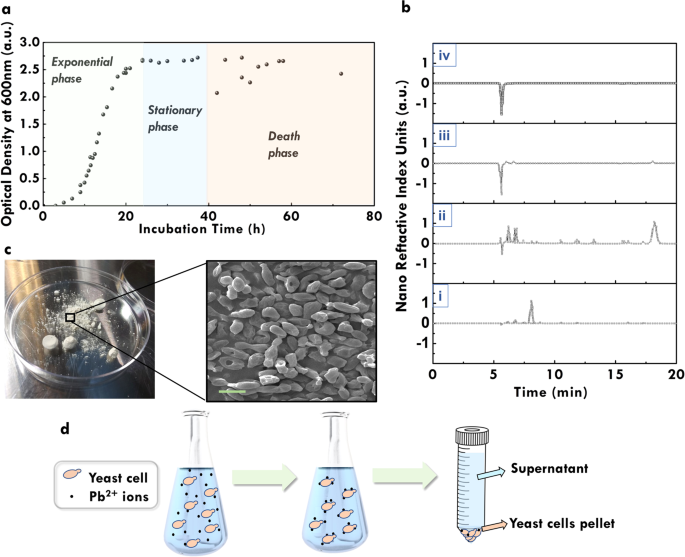2022-06-13 アメリカ合衆国・マサチューセッツ工科大学(MIT)

・ MIT の Center for Bits and Atoms(CBA)を始めとする国際研究チームが、ビール醸造の使用後に安価・大量に入手できるシンプルな不活性酵母(S. cerevisiae)による、水道水中の超微量の鉛の除去効果を発見。
・ 新アプローチは極めて効果的で、ボストンの一ヶ所のビール醸造所で廃棄される酵母で都市全体の給水処理を賄える。完全に持続可能なシステムとして、水の浄化だけでなく、処理が必要な廃棄物の排出防止にも貢献する。
・ 鉛等の重金属は、電子部品や採鉱の廃棄物で増加している重大な世界的問題。米国だけでも12,000 マイル(約 19,300km)超の水路が重金属を多量に含む酸性排水の影響を受けており、水質汚染の主な原因となっている。
・ 鉛は超微量でも毒性が極めて高く、特に小児の成長に影響を及ぼす。EU では飲料水の鉛の基準量を 10ppb から 5ppb に低減し、米国では環境保護庁(EPA)が安全なレベルは無いとしている。
・ 不活性な生物材料で水から重金属を除去する新アプローチのプロセスはバイオソープション(生物吸着)と呼ばれ、以前から知られているもの。ただし、このプロセスは、1ppm 以上の高濃度を対象としている。
・ 醸造や工業プロセスで広く用いられる酵母の一種である S. cerevisiae の不活性な乾燥酵母細胞1g が、1ppm を下回る初期鉛濃度の水溶液で最大 12mg の鉛を除去できることを実証。また、このプロセスは 5 分未満の高速で完了する。
・ 不活性の乾燥酵母を使用するため、生きたバイオマスに依存する他のプロセスのような特別な注意が不要。さらに、酵母はビール醸造や発酵を利用する産業プロセスからの廃棄物として豊富に入手できる。
・ 1 日当たり約 2 億ガロンを消費するボストン規模の都市の水道水の浄化には、1 日当たり約 20 トン(年間約 7,000 トン)の酵母が必要と推測。Boston Beer Company では、発酵に使用不可能な余剰酵母を年間 2 万トン排出している。
・ このような低濃度での酵母細胞による生物吸着機構の解明は困難だが、力学的な観点で同機構を初めて解明し、酵母細胞の機械的性質が鉛の吸着後に著しく変化することを発見。生物吸着プロセスに関する新たな洞察を獲得した。
・ 次は、水処理後に鉛から酵母を分離して再利用するシステムの開発を目指す。カドミウムや銅等の他の重金属の除去にも同材料を使用できる可能性があるが、その有効性の定量化にはさらなる研究が必要。
URL: https://news.mit.edu/2022/yeast-heavy-metal-contamination-water-0613
<NEDO海外技術情報より>
関連情報
Nature Communications Earth & Environment 掲載論文(フルテキスト)
Lead removal at trace concentrations from water by inactive yeast cells
URL: https://www.nature.com/articles/s43247-022-00463-0
Abstract
Traces of heavy metals found in water resources, due to mining activities and e-waste discharge, pose a global threat. Conventional treatment processes fail to remove toxic heavy metals, such as lead, from drinking water in a resource-efficient manner when their initial concentrations are low. Here, we show that by using the yeast Saccharomyces cerevisiae we can effectively remove trace lead from water via a rapid mass transfer process, called biosorption, achieving an uptake of up to 12 mg lead per gram of biomass in solutions with initial lead concentrations below 1 part per million. Through spectroscopic analyses, we found that the yeast cell wall plays a crucial role in this process, with its mannoproteins and β-glucans being the key potential lead adsorbents. Furthermore, by employing nanomechanical characterization in the yeast biomass, we discovered that biosorption is linked to an increase in cell wall stiffness. These findings open new opportunities for using environmentally friendly and abundant biomaterials for advanced water treatment targeting emerging contaminants.



